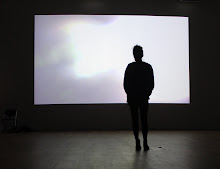Tunnel Vision seeks to dispel current misconceptions about contemporary art shows. It aims to rail against the notion of a ‘white wall’ gallery space and the pretences that are associated with this kind of event. By using the Williamson tunnels as a setting, the group intends to create a space wherein their work can become accessible and recognisable beyond the confines of the hegemony of Fine Art, responding to and working with the aesthetic and history of a space that was not necessarily created to house art.
The history of the Williamson tunnels comes into play when the function of art is considered; both are essentially useless out of context:
The original purpose of the tunnels is largely unknown, as is art to major social sectors.
In theory art has become introverted and exclusive. The mass perception of ‘high’ contemporary art is one laden with jargon and complicated interpretations that without a specific education in Fine Art become very difficult to penetrate and understand. This has resulted in many instances to an almost secular attitude to ‘high’ contemporary art and a feeling of alienation to certain sections of society.
The aim of this exhibition is to expel said exclusivities and attempt to diversify the audience that this high art receives. That is not to suggest, however, that the art included does not have a conceptual nature. Through group critiques with the public and peers our aim is to eradicate the exclusivity of conceptual art.
With the aid of this publication and the interconnectivity of the work it is our hope that anyone who wishes to can create their own concise interpretation without the need for a forced or expected intellectual view. This will prevent patronisation and a pretentious ‘spoon feeding’ so often associated with the analysis of contemporary art.
The tunnels are a historical landmark in Liverpool largely unrelated to art exhibitions. It is therefore important that those who visit unaware of the work can quickly and easily gain a sense of accessibility and understanding. This then provides a function to the art other than to appease the appetite of its regular audience.

No comments:
Post a Comment